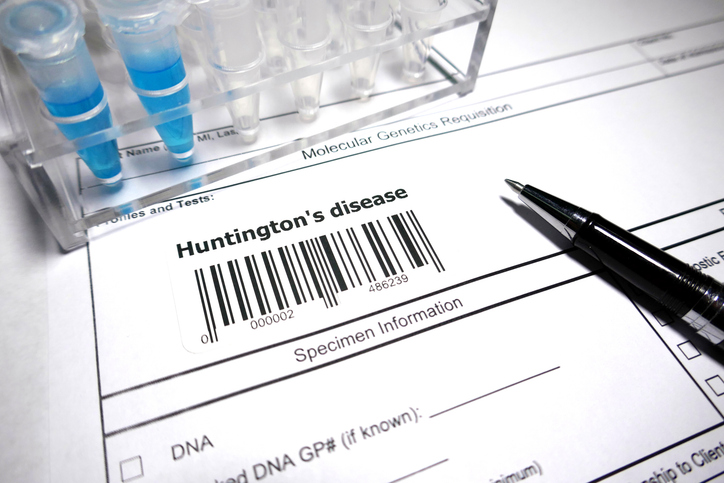uniQure reported positive topline data from the pivotal Phase I/II study of AMT-130 for the treatment of Huntington’s disease. The study met its prespecified primary endpoint, with high-dose AMT-130 demonstrating a statistically significant slowing of disease progression as measured by the composite Unified Huntington’s Disease Rating Scale (cUHDRS*) at 36 months compared to a propensity score-matched external control, according to the company.
The study also met a key secondary endpoint by achieving statistically significant slowing of disease progression as measured by Total Functional Capacity (TFC) at 36 months compared to a propensity score-matched external control.
“I am thrilled that this pivotal study of AMT-130 showed statistically significant effects on both cUHDRS and TFC at 36 months, supported by mean CSF NfL remaining below baseline,” stated Sarah Tabrizi, MD, PhD, professor of clinical neurology, director of the University College London Huntington’s Disease Center and joint head of the department of neurodegenerative disease.
“I believe these groundbreaking data are the most convincing in the field to date and underscore potential disease-modifying effects in Huntington’s disease, where an urgent need persists. These data indicate that AMT-130 has the potential to meaningfully slow disease progression—offering long-awaited hope to individuals and families impacted by this devastating disease.”
Efficacy results
uniQure analyzed clinical outcomes for 29 patients treated with AMT-130 (n=17 high dose; n=12 low dose) of which 12 patients per dose group had attained 36 months of follow-up and were evaluated at that time point. Outcomes for each dose group were compared to a propensity score-matched external control drawn from the Enroll-HD natural history data set (n=940 for high dose; n=626 for low dose).
Topline 36-month efficacy results for patients receiving high-dose AMT-130 are as follows (data cutoff as of June 30, 2025):
- A statistically significant 75% slowing of disease progression as measured by cUHDRS (p=0.003), which met the primary endpoint of the study. Treated patients had a mean change in cUHDRS from baseline of -0.38 compared to a change of -1.52 for patients in the propensity score-matched external control.
- A statistically significant 60% slowing of disease progression as measured by TFC (p=0.033), which met a key secondary endpoint of the study. Treated patients had a mean change in TFC from baseline of -0.36 compared to a change of -0.88 for patients in the propensity score-matched external control.
- Favorable trends in other secondary endpoint measures of motor and cognitive function, including Symbol Digit Modalities Test (SDMT), Stroop Word Reading Test (SWRT), and Total Motor Score (TMS).
- An 88% slowing of disease progression as measured by SDMT (p=0.057), with a mean change in SDMT from baseline of -0.44 compared to a change of -3.73 for patients in the propensity score-matched external control.
- A 113% slowing of disease progression as measured by SWRT (p=0.0021), with a mean change in SWRT from baseline of 0.88 compared to a change of -6.98 for patients in the propensity score-matched external control.
- A 59% slowing of disease progression as measured by TMS (p=0.1741), with a mean change in TMS from baseline of 2.01 compared to a change of 4.88 for patients in the propensity score-matched external control.
- A mean reduction from baseline in cerebrospinal neurofilament light protein (CSF NfL) of -8.2%. CSF NfL is a well-characterized, supportive biomarker of neurodegeneration. Elevation in CSF NfL has been shown to be strongly associated with greater clinical severity of Huntington’s disease.
The company believes that the consistently favorable results in functional, motor, and cognitive endpoints at 36 months observed in the high dose group, compared to the variable trends observed in the low dose group, reflect a dose-dependent response to AMT-130.
Various other supportive analyses of the results from the AMT-130 high dose treatment group, including those using a propensity score-weighted external control and comparisons to the TRACK-HD and PREDICT-HD datasets, were consistent with the primary analysis, noted Walid Abi-Saab, MD, chief medical officer at uniQure.
Generally well-tolerated and manageable safety profile
AMT-130 was generally well-tolerated, with a reported manageable safety profile at both doses. As of June 30, 2025, no new drug-related serious adverse events have been observed since December 2022. The most common adverse events in the treatment groups were related to the administration procedure, which all resolved.

“We are incredibly excited about these topline results and what they may represent for individuals and families affected by Huntington’s disease,” said Abi-Saab. “These findings reinforce our conviction that AMT-130 has the potential to fundamentally transform the treatment landscape for Huntington’s disease, while also providing important evidence supporting one-time, precision-delivered gene therapies for the treatment of neurological disorders.
“Today’s outcome reflects the tireless commitment of so many at uniQure, and I want to extend my deep gratitude to the team, as well as to the investigators, site personnel, patients, and families who made this possible. We are eager to discuss the data with the FDA at our pre-BLA meeting expected later this year, with the goal of submitting a BLA in the first quarter of 2026.”
AMT-130 has been granted Breakthrough Therapy designation and Regenerative Medicine Advanced Therapy (RMAT) designation from the FDA.
*cUHDRS was developed to assess disease progression in early-to-moderate manifest Huntington’s disease. It consists of four assessments.

